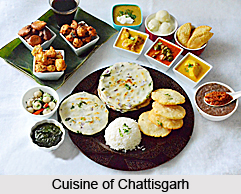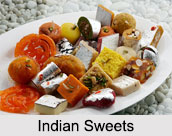Traditional Indian Beverages thrives to be a popular part of the Indian cuisine and has an array of drinks that are both unique and refreshing. According to Indian ethnic culture, drinking Alcohol was considered bad hence there were only few local alcoholic traditional drinks prepared with locally available ingredients. Somaras or Soma served as a much prized historical beverage in India, which was made as a part of a sacrificial ritual, by pressing the plant between stones, mixing the juice with milk and filtering it through sheepskin. It was however strictly not an alcoholic drink, since less time was involved between manufacture and consumption.
 The most traditional Indian beverages comprise Garam-Chai, Lassi, Chach, Sharbat, Thandai, Shikanjami, Kanj, or even sweetened milk with ground nuts. During the olden days, refreshed sweetened warm milk (un-pasteurised, un-homogenised) was known to have been drunk in the morning and as a night-cap at bedtime. Chaach (Buttermilk) was consumed during lunch and dinner. Young women were of the habit to drink sweetened warm milk with turmeric powder, in order to possess a translucent, shimmering skin. The contemporary restaurants, however, prepare their own version of masala milk. Depending upon the season, coconut water, unfermented coconut sap (Neer), fermented coconut sap (Toddy), tempered mango juice (Aam Panna) are quite widespread as beverages in India. The Mughal s are acknowledged to have introduced the concept of Sharbat (sweet fruit/flower fragrant beverages) amongst the pan-Indian populace, moving finally from royal household. The British Raj were the foremost to introduce the class as well as the mass to get hooked on to `tea` time, ensuing in the most legendary and admired Indian beverages recognised as `Garam Chai` or `Masala Chai`. In Punjab, the cold beverages under popular demand incorporate: Lassi, Shikanjami and Kanji. Thandai is yet another popular cold beverage in Rajasthan and Uttar Pradesh. Jal-Jeera is a popular street beverage in the whole of the country.
The most traditional Indian beverages comprise Garam-Chai, Lassi, Chach, Sharbat, Thandai, Shikanjami, Kanj, or even sweetened milk with ground nuts. During the olden days, refreshed sweetened warm milk (un-pasteurised, un-homogenised) was known to have been drunk in the morning and as a night-cap at bedtime. Chaach (Buttermilk) was consumed during lunch and dinner. Young women were of the habit to drink sweetened warm milk with turmeric powder, in order to possess a translucent, shimmering skin. The contemporary restaurants, however, prepare their own version of masala milk. Depending upon the season, coconut water, unfermented coconut sap (Neer), fermented coconut sap (Toddy), tempered mango juice (Aam Panna) are quite widespread as beverages in India. The Mughal s are acknowledged to have introduced the concept of Sharbat (sweet fruit/flower fragrant beverages) amongst the pan-Indian populace, moving finally from royal household. The British Raj were the foremost to introduce the class as well as the mass to get hooked on to `tea` time, ensuing in the most legendary and admired Indian beverages recognised as `Garam Chai` or `Masala Chai`. In Punjab, the cold beverages under popular demand incorporate: Lassi, Shikanjami and Kanji. Thandai is yet another popular cold beverage in Rajasthan and Uttar Pradesh. Jal-Jeera is a popular street beverage in the whole of the country.
India has remained legendary, rising to top chart for its mouth-watering, refreshing, cheap and easy to make beverages. Literally drunk with a savouring tongue, until the last drop, the beverages available in India have formulated the choicest selection of interesting drinks that are reflective of the indigenous culture. Beverages imply those flavoured drinks, suitable for a hot, humid scorching day, when nothing seems at peace with oneself, making them apropos in human consumption. It can be any drink prepared in highly unlike manners in order to satisfy a quenching, yearning thirst. Since alcoholic drinks have always been prohibited by health professionals and medical practitioners, especially in many ethnic cultures in India, Indians have successfully developed a multitude of non alcoholic beverages in its own right.
Tea or Chai is a North Indian beverage made from leaves, twigs or buds of a tea bush called Camellia Sinensis. Indian tea processing procedures includes fermentation, heating and drying. Herbs, flowers, fruits and other spices are being added as an added appeal. Chai is known throughout many countries. It comes in different flavours and strengths. Some of the Indian teas are the Darjeeling Tea, Assam Tea and Nilgiri Tea. Most people use tea as a natural hair conditioner, skin vitaliser and a cure for arthritis. To make an Indian tea, it`s helpful to understand the basics.
Tea can blindly be looked at as a staple beverage all through India; the finest varieties are however grown in Darjeeling and Assam. It is generally concocted as masala chai, wherein the tea leaves are boiled in a mix of water, spices such as cardamom, cloves, cinnamon and ginger, and massive quantities of milk to produce a thick, sweet, milky concoction. Umpteen varieties and flavours of tea are prepared to suit dissimilar tastes all over the country. Another popular beverage, coffee, is largely dished out in South India. One of the finest varieties of Coffee Arabica is grown in stretches of Mysore, Karnataka, and is marketed under the trade name "Mysore Nuggets". Indian filter coffee, or kaapi, is also especially popular in South India. Other beverages incorporate nimbu pani (lemonade), lassi, chaach, badam doodh (almond milk with nuts and Cardamom), sharbat and Coconut water. India also possesses numerous indigenous alcoholic beverages, including palm wine, fenny and Indian beer. There also exists the much-liked bhang, prepared using cannabis and typically consumed, especially in North India, during Holi and Baisakhi. However, the practice of drinking a particular kind of beverage with a meal, or termed as "wine and food matching" (the process of coupling food dishes with wine to only enhance the dining experience), is not however traditional or familiar in India.
Although the above listed Indian beverages are popular, the populace prefers to consume drinking water with their food, because water does not ever outshine the smack of the food. In fact, it is customary to offer drinking water to guests in any Indian household before serving any hot or cold drinks.
Beverages in India possess that `something special` about the drinking concoction or mix, which is mostly introduced and instilled in the drink. Any given beverage possesses an interrelation with the culture of a particular society. Although water is not considered as a beverage in the Indian scenario, beverages can be both alcoholic and non-alcoholic. In case of alcoholic beverages, base of the drink is alcohol, where as, in case of non-alcoholic beverage, alcohol is less than 0.5 percent by volume. Carbonated drinks mostly serve as flavoured water concoctions. Hot drinks refer to coffee and also the chocolate flavoured drinks.
India with its varied cuisine and a la carte menu in terms of solid astronomical delight, also has proudly developed a multitude of beverages to be consumed by its all and sundry habitants. Mango, the choicest summer fruit, grows in most parts of India. This fruit has so many varieties existing and growing in the soil, that all those varieties further taste differently. In summer, one always holds the pleasure to enjoy popular Indian beverages prepared out of mango. Mango Shake and Mango lassi are the two most popular amongst these mango beverages. Mango Shake is an excellent fruity beverage on any blistering and sultry day in the yearly singeing summer of India. Thick mango pulp is also used along with milk, cream and sugar. Frozen pulp of mango however guarantees better consistency compared to fresh pulp. Usually, a shake is garnished with cracked or crushed dry fruits, to lend both a visual and psychological impact.
Coconut powder and rose essence is used to top up the garnishing in any Indian mango beverage. One just needs to taste it to enjoy the real flavour of this drink. Mango can also be replaced sometimes with banana or other seasonal wonders. Mango Lassi is as popular as Mango Shake. In Lassi, the base is yogurt rather than milk. Mixing the pulp of mango in yogurt along with sugar and further in a blender, ensures a complete vision of Indian beverage. The Thickness of the beverage can be made more or less as par one`s personal palate. Water is mostly used to make the lassi less thick.
A version of Lassi without mango is another favourite Indian beverage. It comes in two variants, comprising sweet or salty options. Most of the dairy product manufacturers commercialise lassi in these variants. It is an outstanding drink, especially during the regular summer months in India. Peach Melody tastes excellent, implying a fruit cocktail based on rock solid and savoury orange juice. Other ingredients of this concoction include peach and ice-cream.
Aum Kheer is another beverage in India made out from mango. Aum Kheer also serves as a great treat during summer. Sweetened milk makes a great creamy base and additional flavour is added in the form of cardamom. This drink is simply splendid after a spicy dinner before retiring to bed. Choco-Coffee Shake, another admired beverage, serves as refreshing summer drink, concocted from chocolate and coffee. Tea and coffee are indeed most common beverages in India. Liked in both the hot and cold variations, they are served in umpteen varieties all across India.
Strawberry milk shake is especially popular in south India. Frozen and fresh strawberries and milk is used for this shake, to dish out a memorable beverage, suiting Indian tastes; strawberry milk is yet an excellent summer drink once more. Banana Berry Smoothie made with fruits like banana, strawberry and raspberry, makes one go weak in the knee, each time he/ she is served with it in a chilled glass. Yogurt and milk add creamy richness to the smoothie. The shake also serves more as a health food rich in potassium, antioxidants and calcium.
Whether to beat the heat of oppressive Indian summer or just to savour the taste, Indian beverages do possess a worldwide appeal. Tasty, refreshing, easy to make and at the same time cheap, Indian beverages have efficiently carried off a number of celebrations. Thandai (nut milk) Lassi, a drink prepared from curd Nimbu Paani (fresh lime juice) Aam Panna (drink prepared from mango juice), Jal Jeera are some of the typical North Indian beverages. These drinks are popular on festive occasions and served for entertaining guests. Beverages are also served at Indian Weddings, amidst much fanfare. Chaach is a traditional Gujarati beverage and in some places consumed instead of drinking water and is the vernacular term for butter milk. Sharbat is yet another traditional Indian drink that was popularised by the Mughal rulers and is prepared from fruits or flower petals. The Coromandel Coast variation of tea, a mixture of coffee and tea is also a grossly admired beverage in India. However this is only the tip of the iceberg as the Indian beverages can be found in their endless variety and subtlety, perhaps still in an un-ripened stage, maturing towards futuristic prospects.




















